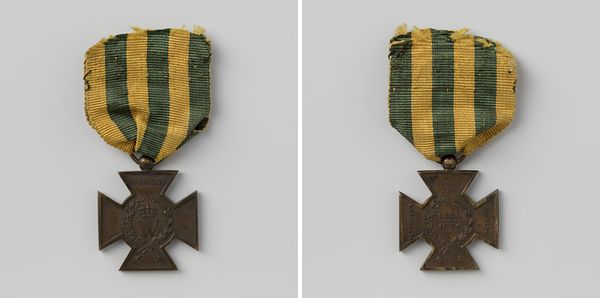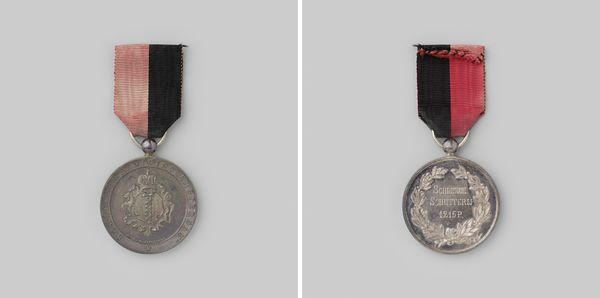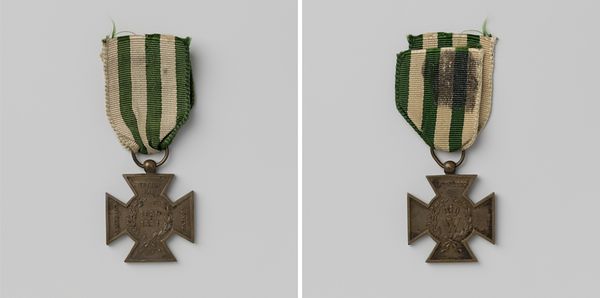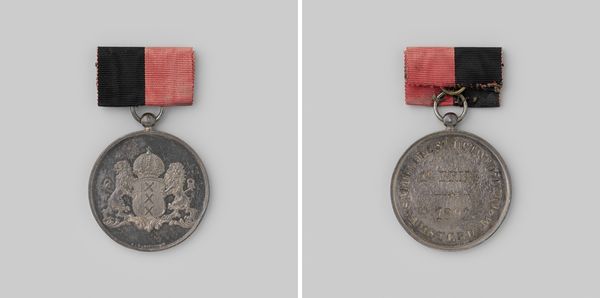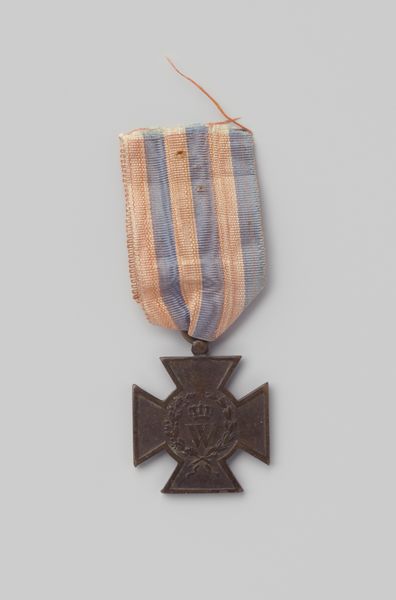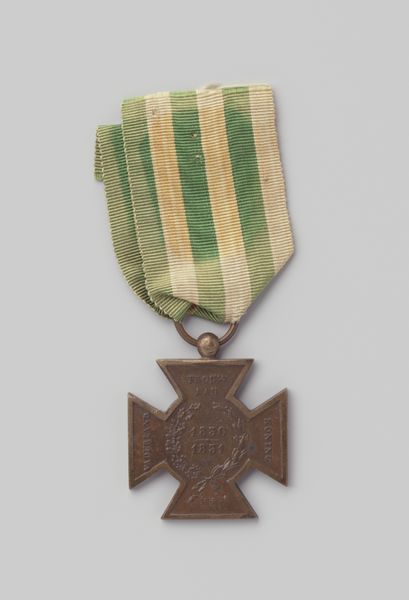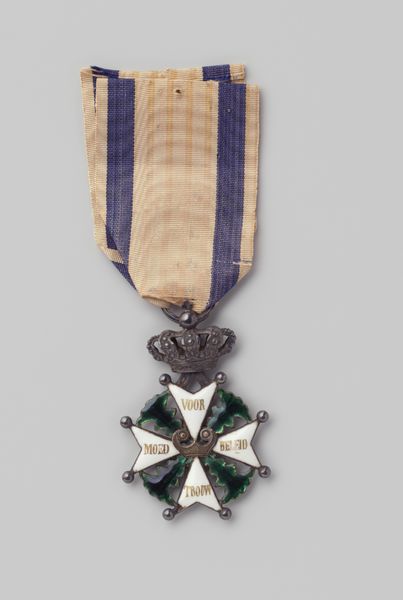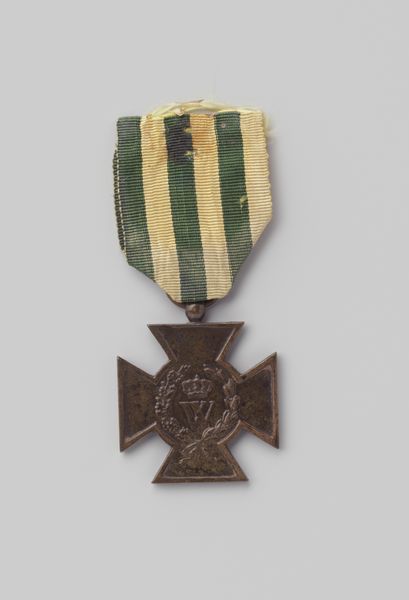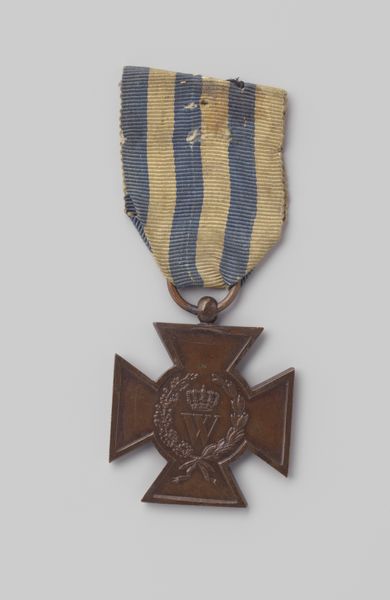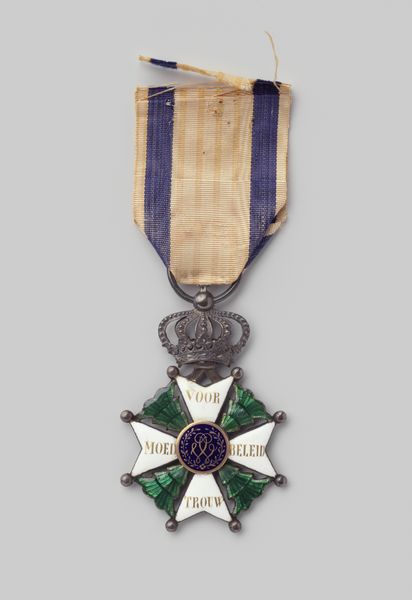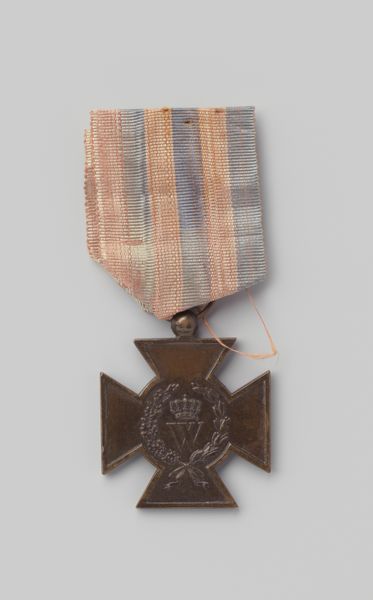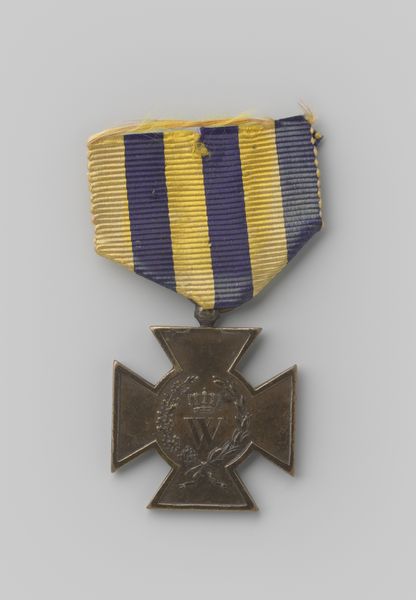
Gedenkpenning Sint-Helenamedaille, ingesteld door Napoleon III in 1857 en toegekend aan veteranen die tussen 1792 en 1815 in Franse dienst hadden gevochten 1857
0:00
0:00
metal, bronze
#
portrait
#
medal
#
neoclacissism
#
metal
#
bronze
#
history-painting
Copyright: Rijks Museum: Open Domain
Curator: What an interesting artifact. We’re looking at the Saint Helena Medal, designed by Albert-Désiré Barre in 1857. This bronze medal was commissioned by Napoleon III. Editor: My first thought is one of sombre reflection. The muted bronze and the aged ribbon give it a dignified, almost mournful air, like a relic recovered from a battlefield. The imperial crown gives it authority, but it looks rather tarnished and timeworn. Curator: Indeed. It speaks volumes about how societies choose to remember conflicts. Instituted decades after Napoleon’s reign, the medal was awarded to veterans who fought in French service between 1792 and 1815. Its creation signifies a deliberate effort by Napoleon III to align himself with his uncle's legacy, capitalizing on the romanticized memory of the Napoleonic era. How does it sit within France's historical narrative? Editor: From an iconographic perspective, it’s packed. You've got the laurel wreath, the imperial crown—standard symbols of victory and authority. But I think it is also an act of reconciliation by the Napoleon III, acknowledging the contributions of ordinary soldiers who might have felt forgotten after the fall of the empire. Look at how the image is so deliberately styled to resemble ancient roman coinage; an effort to invoke and assimilate imperial grandeur with classical virtues and heroic glory. Curator: Exactly! It underscores the complex relationship between the military and nation-building during the 19th century. The medal acknowledges their past participation and serves as a political strategy for bolstering national unity under Napoleon III, regardless of who their first allegiance was during that very turbulent period in France. But does rewarding participation regardless of victory promote or obstruct genuine patriotism? Editor: It certainly raises uncomfortable questions of loyalty and how national identity can be manipulated, as the metal seems almost funereal in presentation.. These symbols weren’t just decorative. These visual cues held immense power to conjure emotional responses tied to national pride, but this one perhaps is to reconcile the populace after Napoleon's military campaigns. Curator: So, it's less about celebrating outright triumph and more about the complex legacy of trauma, collective identity and socio-political re-alignments that shaped modern Europe. What a testament to enduring symbols and shifting narratives. Editor: A miniature artifact that holds multiple perspectives indeed! It speaks of legacies both glorious and traumatic, reminding us of how symbols of power and sacrifice persist through the ages.
Comments
No comments
Be the first to comment and join the conversation on the ultimate creative platform.
